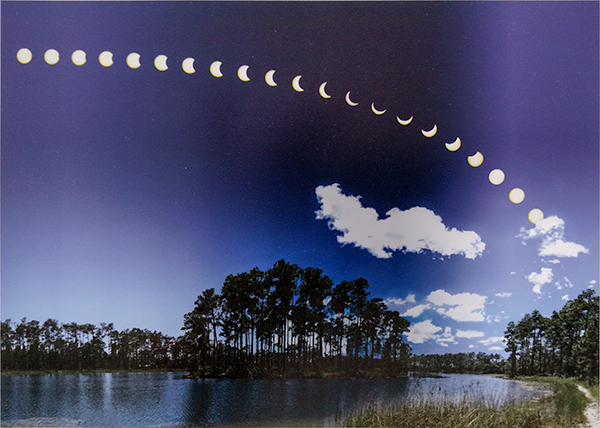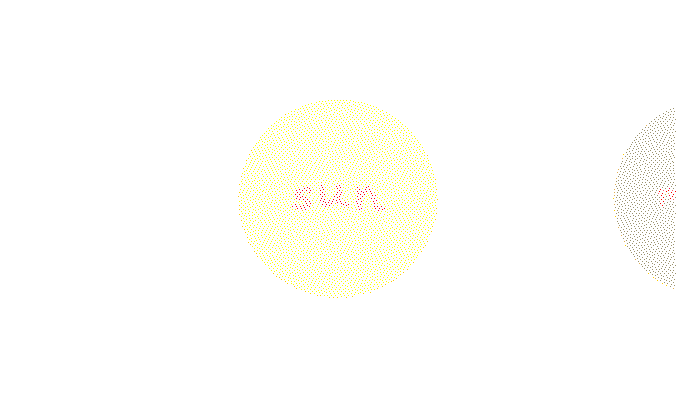When I tried to print our second 26″ by 36″ canvas copy of “Eclipse Over Long Pine Key”, the colors were as shown below. I thought one of the ink cartridges must be empty, or the printer had a clogged nozzle or something. I pulled out the roll of canvas, performed a cleaning, and did a nozzle check, all of which went well. So I did a small (5″ by 7″) test print on luster paper. It turned out the same way. It was late, so I just shut off the printer and went to bed. The next morning the printer passed all tests, and I was able to make the correct print with no problem. I’ve never had that problem before or since. I was intrigued by the picture and kept the small print as a memento. I have no idea how to duplicate this image.

Often, when people see the original version hanging in our booth at an art festival, many think it shows a time-lapse of the moon’s phases. I assure them that although the moon plays a crucial role, it is not directly visible in the image. Below is an animation showing the three different celestial events involving the moon. A solar eclipse happens only during the day when the moon is new. A lunar eclipse only happens on a night with a full moon. In the animation, both of those are total eclipses, while both versions of our “Eclipse Over Long Pine Key” show only a partial solar eclipse. The third part of the animation shows a complete lunar cycle with all the moon’s phases. In this case, unlike the other two events, the edge of the obscured part of the celestial body will always touch both poles.

Leave a Reply